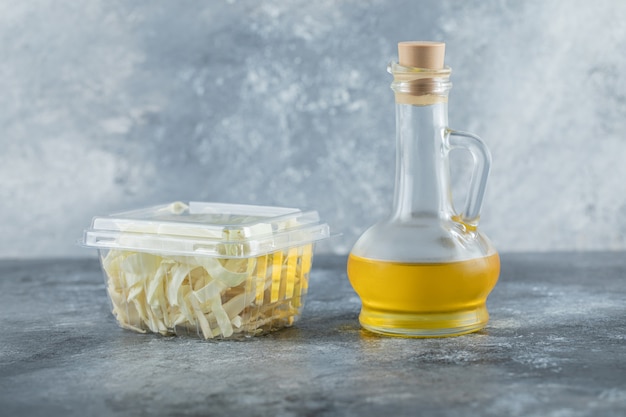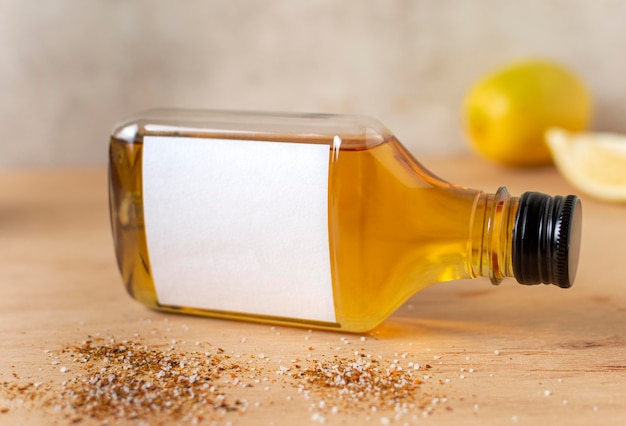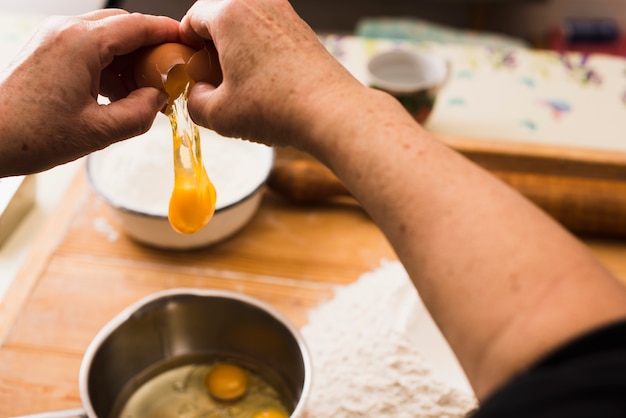Let's be honest, a good cooking oil can make or break a dish. And when it comes to flavour and health benefits, sesame oil is a real winner. It's that nutty, slightly smoky flavour that just elevates everything from stir-fries to salads. But, like any good thing, there's a right way and a wrong way to use it. So, grab a cuppa, settle in, and let me walk you through everything you need to know about this amazing oil.
(Part 1) What Exactly Is Sesame Oil?

Think of sesame oil as the essence of the sesame seed. It’s more than just that paste we know as tahini; it's the extracted oil, a nutty, aromatic liquid with a long and storied history in Asian cuisine. But, hold on, there’s a twist - there are two main types:
1. Toasted Sesame Oil: The Smoky Star
This is the one most folks are familiar with. It’s the oil that gives your stir-fries that irresistible golden hue and smoky, nutty flavour. Toasted sesame oil is made by roasting sesame seeds until they’re golden brown, then pressing out the oil. And because it's already been roasted, it's best to use it towards the end of cooking, like a finishing touch, to prevent it from burning. Imagine a sprinkle of toasted magic over your dish - that's what toasted sesame oil is all about.
2. Raw Sesame Oil: The Subtle All-Rounder
Now, this is the secret weapon, the one that's less talked about but just as valuable. Raw sesame oil is made by pressing raw sesame seeds, giving it a milder, less intense flavour, like a whisper of nutty goodness. I use it for everything from salad dressings to marinades. Even a drizzle over soup adds a touch of elegance. It's also far more heat-stable than toasted sesame oil, meaning you can actually cook with it over a higher heat without worrying about burning it.
(Part 2) The Health Benefits of Sesame Oil

Now, I'm not a doctor, but I do love my food, and I know a good thing when I see one. Sesame oil is packed with antioxidants, those little warriors that fight off harmful free radicals. It's also a good source of vitamin E, which is great for skin and hair. And if you're looking for a healthy cooking oil, look no further. It's low in saturated fat and high in monounsaturated fat, the kind that's actually good for you. It's a win-win.
I’m not saying it's a magic bullet, but it’s definitely a good choice. Sesame oil is good for folks watching their cholesterol, and some studies even suggest it can help reduce inflammation. Knowing I'm using a healthy oil makes me feel a bit better about indulging in delicious dishes.
(Part 3) Choosing the Right Sesame Oil: Quality Matters

Okay, here's the deal. Not all sesame oils are created equal. Just like any other ingredient, you want to choose a good quality oil. Look for oils that are cold-pressed and unrefined. This means the oil is extracted without heat or chemicals, preserving the flavour and nutrients. You'll often see labels like "cold-pressed" or "expeller-pressed" on the bottle. It's worth paying a little extra for quality, trust me.
And honestly, you'll be able to taste the difference. I've been there, I've tried the cheaper stuff, and it's just not the same. It lacks that depth of flavour. So, trust me on this one, splurge a little bit and get a good quality oil. Your taste buds will thank you.
(Part 4) Storing Sesame Oil: Keeping It Fresh and Flavorful
Alright, so you’ve got your oil, now what? Well, you want to make sure you store it properly to keep it fresh and full of flavor. Sesame oil is best kept in a cool, dark place. Keep it away from heat and light because it can oxidize and become rancid. It's a good idea to store it in a glass bottle with a tight-fitting lid.
I keep mine in the pantry, away from the stovetop and direct sunlight. I also don't keep it for too long. Like anything else, oil can go bad, so it's always best to use it within a few months. I usually try to buy a smaller bottle, that way I'm not stuck with too much! It’s all about finding that balance.
(Part 5) Using Sesame Oil in Cooking: Mastering the Art of Flavor
Now, this is where the fun really begins. Sesame oil is a versatile ingredient, perfect for a variety of dishes. But there are some basic guidelines to help you get the most out of it.
1. Toasted Sesame Oil: A Finishing Touch
Remember what I said about it being a finishing touch? It's best added towards the end of cooking, just before serving. This will preserve its flavour and aroma. Now, I'm not saying you can't use it for frying, but I wouldn't recommend it. It's got a low smoke point, which means it burns easily at high temperatures. You don't want that smoky, bitter flavour in your food. So, use it as a finishing oil, and it'll add that amazing nutty depth to your dishes.
Imagine a beautifully cooked stir-fry, the vegetables just right, the meat perfectly tender. Then, a drizzle of toasted sesame oil, adding that final layer of flavour and aroma. It's a truly satisfying experience.
2. Raw Sesame Oil: Cooking with Confidence
Now, this is where you can get creative. Because it's more heat-stable, you can actually cook with it. You can use it for stir-frying, sautéing, even baking! It's also great for making salad dressings, marinades, and sauces. You can even drizzle it over noodles or rice. It's a great way to add a subtle nutty flavour to your dishes without overpowering them.
Think about a delicate pan-seared fish, a touch of raw sesame oil bringing out the natural flavours of the fish. Or a light and refreshing salad with a dressing infused with raw sesame oil. It's all about balance and finding that perfect flavour profile.
(Part 6) Sesame Oil Recipes: Putting the Theory into Practice
Okay, I know what you're thinking: "I get it, sesame oil is great, but what do I actually cook with it?" Don't worry, I've got you covered. Here are a few of my favourite recipes that showcase the versatility of sesame oil:
1. Spicy Garlic Noodles: A Quick and Easy Weeknight Winner
These noodles are simple yet packed with flavour. You sauté garlic in toasted sesame oil, then toss it with noodles and your favourite veggies. A dash of chili flakes and soy sauce, and you're good to go! It's a quick and easy weeknight dinner that everyone loves.
2. Sesame-Ginger Glazed Salmon: A Crowd-Pleasing Treat
You can't go wrong with a good salmon recipe. This one is a real crowd-pleaser. You marinate the salmon in a mixture of soy sauce, ginger, garlic, and honey. Then, you bake it until it's flaky and tender, and glaze it with a mixture of sesame oil, soy sauce, and honey. It's delicious and easy to make!
3. Asian-Inspired Coleslaw: A Refreshing Twist on a Classic
I'm always looking for new ways to use coleslaw, and this one is a winner. You toss shredded cabbage, carrots, and other veggies with a dressing made from raw sesame oil, rice vinegar, and a touch of honey. It's a refreshing and healthy side dish that's perfect for a summer barbecue.
4. Sesame Oil Vinaigrette: A Simple and Flavorful Dressing
This is my go-to dressing for salads. It's simple and easy to make, and it's so flavorful! You just whisk together raw sesame oil, rice vinegar, soy sauce, and a touch of honey. You can add other ingredients like minced garlic, ginger, or chili flakes to add more flavour. I love how it makes my salad taste just a bit more special!
(Part 7) Frequently Asked Questions: Clearing Up the Confusion
I've been there, I've asked all the questions. Here are some of the most common questions about sesame oil, and my answers!
1. Can I Use Sesame Oil for Deep Frying?
You can, but I wouldn't recommend it. Sesame oil has a low smoke point, which means it burns easily at high temperatures. If you do decide to deep-fry with sesame oil, use it in moderation, and make sure the oil isn't too hot. You can also use a blend of sesame oil and a higher-smoke point oil, like peanut oil or vegetable oil. It's all about finding that balance.
2. Can I Substitute Sesame Oil for Other Oils?
It depends. If you're looking for a nutty flavour, then sesame oil is a good choice. But if you're just looking for a neutral-flavored oil, then you can use another oil like vegetable oil or canola oil. You can also substitute sesame oil with other oils like peanut oil, grapeseed oil, or sunflower oil, but keep in mind they won't have the same nutty flavour.
3. How Long Does Sesame Oil Last?
Unopened, sesame oil can last for up to a year. Once opened, it's best to use it within a few months. Store it in a cool, dark place, away from heat and light. It’s all about keeping those flavours fresh and vibrant.
4. Can I Use Sesame Oil in Baking?
Yes, you can! Sesame oil can add a nutty flavour to your baked goods. You can use it in cookies, cakes, brownies, and even breads. Just use it in moderation, as too much can make the baked goods taste oily. It’s all about finding that perfect balance of flavour and texture.
5. What Are Some Other Ways to Use Sesame Oil?
Besides cooking, sesame oil can be used in a variety of ways. You can add a few drops to your bathwater for a relaxing and aromatic experience. You can also use it as a massage oil to nourish and moisturize your skin. It's even been used in traditional medicine for centuries. It’s truly a versatile ingredient.
(Part 8) Conclusion: Embrace the Power of Sesame Oil
So there you have it. Now, you've got all the knowledge you need to become a sesame oil pro. Don't be afraid to experiment! I know you'll love the taste, the health benefits, and the unique depth it adds to your cooking. You never know, you might just find your new favourite ingredient. Go forth and cook with confidence!
Everyone is watching

Prime Rib Roast Cooking Time Chart: Per Pound Guide
Cooking TipsPrime rib roast. Just the name conjures images of lavish dinners, crackling fires, and hearty laughter. It’s ...

How Long to Bake Potatoes in the Oven (Perfect Every Time)
Cooking TipsBaked potatoes are a staple in my kitchen. They're incredibly versatile, delicious, and surprisingly easy to m...

Perfect Rice Every Time: The Ultimate Guide to Cooking Rice
Cooking TipsAs a self-proclaimed foodie, I've always been a bit obsessed with rice. It's the foundation of countless cuisi...

The Ultimate Guide to Cooking Asparagus: Tips, Techniques, and Recipes
Cooking TipsAsparagus. The mere mention of this spring delicacy conjures up images of vibrant green spears, crisp and burs...

Ultimate Guide to Cooking the Perfect Thanksgiving Turkey
Cooking TipsThanksgiving. Just the word conjures up images of overflowing tables laden with delicious food, the scent of r...
